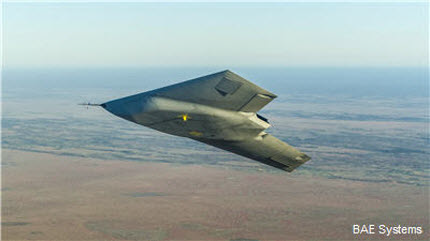UK’s mysterious combat drone completes first test flights
The Taranis UCAV represents "the pinnacle of U.K. engineering and aeronautical design" and is intended to operate in contested airspace.
The U.K. military has successfully demonstrated an advanced, stealthy combat aircraft that could represent the next step in unmanned systems.
Taranis, also known as the Celtic god of thunder, is a top secret unmanned aerial combat vehicle (UCAV) prototype that has been built by a team led by BAE Systems that consists of Rolls-Royce, GE Aviation, and QinetiQ. First unveiled in 2010, the demonstrator aircraft underwent testing in August 2013 – footage is just now being made public.
Taranis is envisioned as being able to penetrate contested airspace and deliver ordnance behind enemy lines – systems such as the MQ-1 Predator used by the U.S. Air Force can only be used in controlled airspace. With a human operator behind the stick, the system is capable of carrying out strikes, deterring adversaries, gathering intelligence, marking targets and maintaining surveillance.

The Taranis, which is similar in size to the BAE Systems Hawk jet, will also be capable of autonomous flying, although U.K. Ministry of Defense and Royal Air Force officials have continually stressed that there will always be a human in control.
BAE Systems test pilot Bob Fraser has said that Taranis flew at least twice as fast as any other done he has operated, according to BBC. Expected to eventually break the sound barrier, the UCAV also uses a low profile and acute angles to reduce its radar cross section.
The Taranis is the result of a cumulative 1.5 million man hours of work from a collection of 250 UK companies, and represents “the pinnacle of U.K. engineering and aeronautical design,” according to BAE Systems.
"The first flight of Taranis represents a major landmark for UK aviation. The demonstrator is the most advanced air system ever conceived, designed and built in the UK,” said Nigel Whitehead, BAE Systems’ group managing director of programmes and support.
According to The Engineer, initial ground testing began in 2010, and was followed by radar cross section measurement tests, unmanned pilot training, and ground station system integration, and taxi trials. After being shipped to an unnamed test range in early to mid-2013, the Taranis conducted several high speed taxi tests and completed its first test flight in August 2013. These tests are designed to provide insight on future combat aircraft capabilities and technological developments following the completion 5th generation joint strike fighter.
The Taranis technology demonstrator program has cost $302.2 million, but developing the concept into a usable warplane will cost much more.